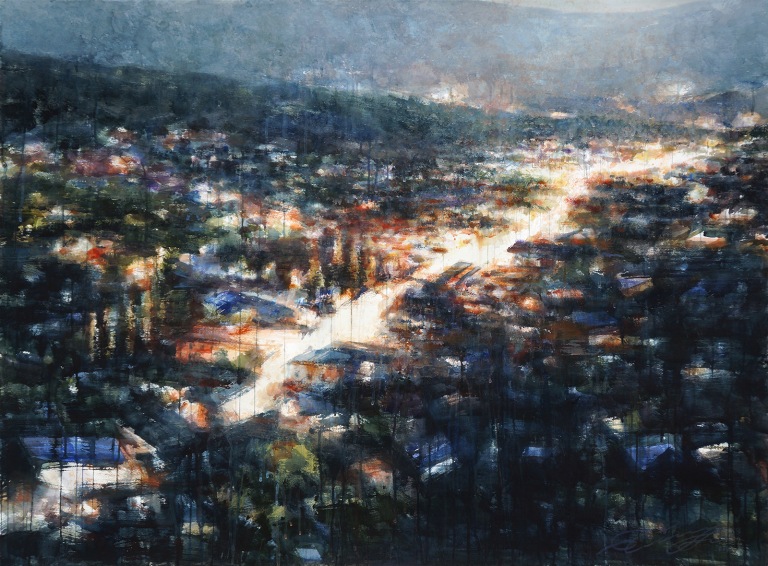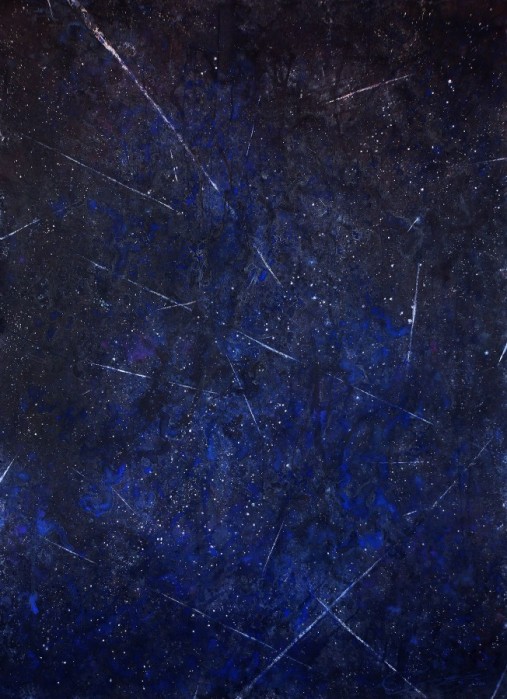Living on the planet Earth, taking our place on it, being occupied with our daily routine is our destiny as human beings. Each of us is just a little part of the Universe, so versatile and limitless. I would like to understand our place in it, our triviality in the universal and our significance in the planetary scale.
– Ekaterina Smirnova
Ekaterina Smirnova was born in 1981 in Novosibirsk, Russia. She started her art education in a Russian art school in Siberia in 1991. Shortly after moving to New York, USA in 2006 she became a member of the Art Students League of NY where she has been developing her style ever since. Ekaterina has received numerous awards in juried shows by the The Salmagundi Club, Allied Artists of America, the Brooklyn Waterfront Artist Coalition, and other art organizations. The past few years Ekaterina has had solo shows in Russia (Novosibirsk Center of Visual Arts), Spain (Villa del Arte Galleries, Barcelona), Austria (Neuhauser Kunstmühle Gallery, Salzburg), and Japan (City Hall, Kofu City, Yamanashi).
Ekaterina’s watercolors strive to break the medium’s typical physical boundaries, overflowing onto 2.5 meters tall rolls of paper, revealing new possibilities. She paints with large hardware brushes on rough textured paper, splashes, sprays, and wipes, washing away accuracy and exactness. In all of her explorations, Ekaterina seeks to move beyond established norms of the watercolor community. Recently she is working with interactive electronics, implementing them in her watercolor paintings. Ekaterina’s future goals include continuing to work in collaboration with scientists, musicians and engineers.
More of Ekaterina’s work can be seen at http://ekaterina-smirnova.com

QAR: Your work deals with perhaps the most innate existential questions defining our species, such as ‘who are we on a universal scale’? Carl Sagan once stated, “we are a way for the cosmos to know itself”. Do you see your work as an extension of this in some way? What aspects of the cosmos inspire you most?
ES: I have started my series of cosmic works with a piece that was based on the photograph that was taken on February 14, 1990 by NASA’s Voyager 3.7 billion miles away from the Sun. Planet Earth appears as one of the droplets on my watercolor painting. That photograph gives you an idea of the dimension of space and our small place in it. This fact has set me in a frame of our nonentity comparing it with the infinite greatness of space. By doing this I have tried to put my mind on a more mathematical and scientific track and be true to the facts, rather then approach the subject in a fantastic way. To understand the universe is to know also our place in it. Knowledge is a strength of ours and not knowing is what drives you to attempt to know more.
There is not a single thing about nature and space that does not impress me. I would say though that one of the most interesting questions I like to ask myself is trying to imagine the universe being infinite. We all have studied that everything has an end, so to imagine a boundless universe is quite a big task. Every time I think of it, my boundaries expand further and further.

QAR: By condensing such immense philosophical questions into imagery, your work invokes the grandiosity of Romanticism. The universe can be simultaneously terrifying in its vastness yet also transcendent in its beauty. What does the sublime mean to you?
ES: I am in deep awe of the universe, so much is being discovered and so often do we see amazing imagery that was taken by our advanced mechanisms. We truly live in a special time. And yet, the universe is unknown to us. So much we lack to know and can only guess. In our guesses we perhaps dream and use our imagination to find an answer, fantastic stories drive us to create more and more instruments that will help to acquire new information. This constant relation between creative arts and science is one of the sublime moments of the discovery of the universe. Just think of it, how is it possible to unite mathematical and lyrical aspects of the human brain so successfully?
Before starting this project I was nursing it in my mind for a very long time. And for a long time I could not find the right moment to start it. One of the reasons that I was frightened to be alone while working on the project, there was so much information I have studied about the space (some of which was very terrifying) that I simply was afraid to get into a depressed mode.
Space is so much bigger then us, it is often overwhelming. Now that I have studied how to handle the heavy aspects, I have realized there is even more excitement and positivity. The enormous power of space is what attracts me the most.

QAR: You have recently begun incorporating electronic sensors into your paintings that can be interactive with the viewer. What is the significance of this? Are you inspired by installations or performance pieces at all?
ES: That is true, in my latest works I play a lot with electronics. By making my artworks interactive I am trying to raise the question of how human actions change the world we live in. Many of my pieces are carrying environmental statements and by implementing sensors I invite my viewers to change the “universe” created by me, as a parallel of the world being changed by humanity on a daily basis. For example, I have a piece called “The Invisible Visible”, when a viewer approaches the piece, it is only partially visible, as they interact with three sensors (light, sound, and temperature), bursts of lights glow and fade, revealing more of the painting. The piece is always different depending on what actions were taken by the viewer.

QAR: You seem to have a very analytical approach to aspects of your work, have you ever collaborated with scientists? What fields of science and technology most appeal to you?
ES: I often talk to different scientists: astronomers, geologists, hydrologists, physicists, biologists…
I find a lot of inspiration from these conversations. I enjoy studying more about our planet and closely follow the discoveries in space. But personally, I am really close to nature, I was studying about it since my childhood and not only at school but also through my grandmother. She has helped me to understand nature and not to be afraid to plant or forage. If I would to do anything else, then I probably would become a botanist.

QAR: The correlation between the galaxy cluster paintings and your cityscape imagery seems to be the universe manifesting itself on a macro and micro scale. I find this a very striking juxtaposition since it also contextualizes human civilization as being so transient and fleeting. What other aspects of cityscapes attracted you to that imagery?
ES: During the search for our place as humans in the universe I have realized that we are more a part of the multiverse that we think we are. Even going to a more micro level then you are referring to, molecular level that is, each of us contains about a tea spoon full of matter that was created during the Big Bang. When I look at the city-scapes, especially in the rainy night, I can’t help but notice the likeness to galactic lights. We have studied how to use energy, turning it into light, projecting it artificially. In space this light is projected by natural causes. Both of the lights are still the same energy and to me this likeness becomes even stronger then. But yet, our human light is fleeting. It is amazing how fast can we achieve things, how fast we progress. Would we be able to realize our actions as fast to make the right turn?

QAR: How do you see this series evolving? What is your next artistic endeavor?
ES: I have studied in my art career that it is impossible for me to plan ahead. I am always impressed to find out that it is pointless for me to be placed in an organized pre-planned schedule. As far as I am concerned, I may be going to the Moon tomorrow, or will be trapped in the discoveries of the molecular universe. What I know for sure though is that I would continue to create pieces that will hopefully make you think a little deeper about our existence and our behavior.


You must be logged in to post a comment.